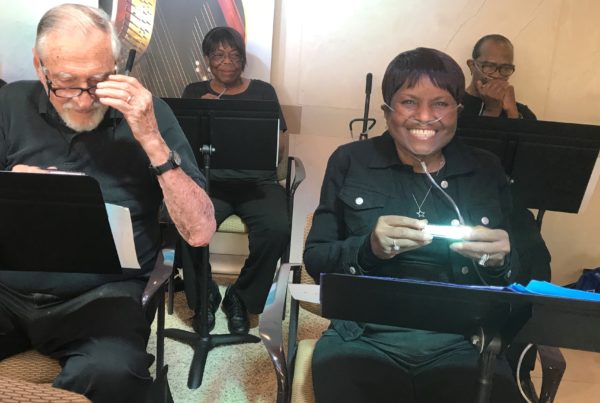The largest Conservative Jewish synagogue in the U.S. is not on the East Coast – it’s in Houston. Congregation Beth Yeshurun is made up of 2,300 families and was founded in 1891. Now, Rice University aims to shine a light on it and the rest of South Texas’s Jewish community and history through its new Houston Jewish History Archive.
Director Josh Furman acknowledges that Houston is not the first place that comes to mind when people think of Judaism in the United States. But he wants to change that.
“One of the missions of this archive is to really, not only preserve the history, but also to create greater awareness – both here in Houston and beyond – about the long, rich history of Jews in Houston and in Texas,” Furman says.
One of the challenges, so far, has been that Hurricane Harvey damaged delicate materials; the synagogue flooded for the first time during that storm. Fortunately, a large team of historians, archivists, community volunteers and Rice students stepped in quickly to help with the recovery effort.
“There’s a room in the synagogue where we just laid out hundreds and hundreds of pieces of paper and photographs on sheets of plastic to dry them out and triage,” Furman says. “Most of this stuff, by the way, dates back to the beginning of the 20th century, to the nineteen-teens. So, there is quite a bit of history there and we were able to save almost all of it.”
Today, the archive has over 80 collections of historical material, and is open to the public at the Woodson Research Center at Rice’s Fondren Library. While the collections mostly focus on Houston’s Jewish history, they also tell the story of Judaism in other South Texas towns like Galveston, Wharton and Schulenberg.
Furman says most people assume that Jewish immigrants in the 19th and 20th centuries came through Ellis Island and then mostly stayed in East Coast cities like New York City, Philadelphia or Boston. But he says nearly 10,000 Jewish immigrants came to the Port of Galveston in the decade before World War II.
“Many of them stayed in Texas, but they also went on to other locations in the South and Midwest,” Furman says. “So, it is a really important chapter in American Jewish history that too often, I think, gets obscured.”
Written by Acacia Coronado.
















